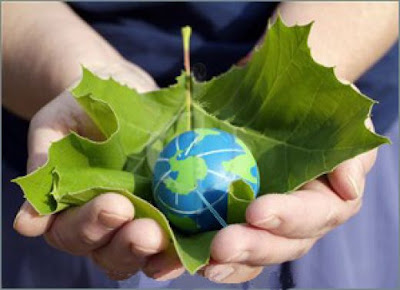.bmp)
By: Azlan Abdul Rahman
How can we be an environmental friendly person? What are the activities and practices that we can implement in order to be an environmental friendly individual? All these questions just need a simple answer - YOU. There is no need to be an environmentalist or an activist if you want to conserve the environment. Regardless of either you are a mother, a scientist, a postman or even a student you can help the Earth to “breath” for a longer time. In order to conserve the environment and to be an environmental friendly person, you can implement these following four practices:
Environmental Friendly Practices at Home - Housewives and family members are the main targets here. Housewives and other family members can be environmental friendly persons if they implement and do some practices which are, in relation, beneficial to the environment. Firstly, we can start by looking at the tools and equipments that they used in their daily life and work. Housewives at home can use cloth towels to wipe the kitchen, tables and counters instead of using tissue papers. Cloth towels are reusable compared to tissue paper. This practice is suitable in the effort to lessen down the number of trees cut for producing tissue paper. By that we are actually maintaining trees for the circulation of oxygen and carbon dioxide. In addition, plant-loving family members can also help protect the environment by using compost organic waste as a nutrient-rich fertilizer for their plants or trees. Stop using pesticides and grow plants like mint to get rid of pests. As we know, the usage of pesticides is one of the major factors contributing to global warming. Using lots of pesticides can cause the depletion of our ozone layer. So, mothers and sisters at home need to start using environmental friendly products and actively implement some environmental friendly practices to help the Earth.
Environmental Friendly Practices at School/University – Students can protect the earth by implementing some environmental friendly practices at their school. For instance, they can plant trees to beautify the school compound. Not only that, this also adds in a breath of fresh air as trees absorb carbon dioxide and release oxygen into the atmosphere. As a result, they do not just serve our eyes but also to our lungs as well. As the same practice at home, instead of using tissue papers, they can use handkerchief to reduce waste and save energy. How does it work? When we use handkerchiefs instead of tissue papers, we are actually preventing the tress from being cut while at the same time conserving the environment. An easy action can help the world. Not to forget, students can also conserve the environment by keeping the school compound clean. Encourage ourselves to use the litter bins every time and let the habit grow in our society.
.jpg)
Environmental Friendly Practices at Office – At the start of the early morning until the end of the evening, a worker can be an environmental friendly person if he or she follows these simple practices. First, workers can use public transportation to reduce air pollution and save on fuel consumption. We need to be aware that by transporting 100 passengers via public buses/trains, it will occupy only 1/10 of total roads, consume 1/6 of fuel and emit 1/16 of noxious gases, as compared to transporting them by cars. The practice of a paperless office, not only can conserve energy but it is also environmental friendly. Instead of using facsimiles and printers, use communication tools such as emails, instant messaging (IM) and video conferencing. By implementing this practice, you are actually saving your energy, money as well as the Earth. In addition, you can also replace artificial plants in your office with natural ones. Promote a green environment and maintain adequate oxygen content in the office atmosphere. Be a ‘go green’ office.
Environmental Friendly Practices When Shopping – Shopaholics, you can be environmental friendly too! How? Firstly, bring your own reusable shopping bag every time you go to the store. You need to be aware that plastic bags are not biodegradable and can take up to 500 years for them to breakdown. So, please bring your own bags and say no to plastic bags. Secondly, we can also protect the earth by select CFC-free or energy efficient appliances and products. Chlorofluorocarbon (CFC) can damage the ozone layer and cause global warning. Next, we can conserve our environment by not buying products which are made from endangered species of animals and plants. Only by doing that, we can maintain the biodiversity in the environment. For mothers, please buy and use non-disposable products. This can reduce waste and save resources. We need to take notice that disposable products like diapers are not completely biodegradable. Obviously, we do not want to inherit a “rubbish world” to our future generation.
So, no matter whether you are a teacher, a nurse, a farmer, a bar tender or even a kid at home, do your part to conserve the world and be an environmental friendly person. Your actions can determine the world of the next generations.
(Photos courtesy of: http://www.hubpages.com & http://www.greenprinter.files.wordpress.com)




















